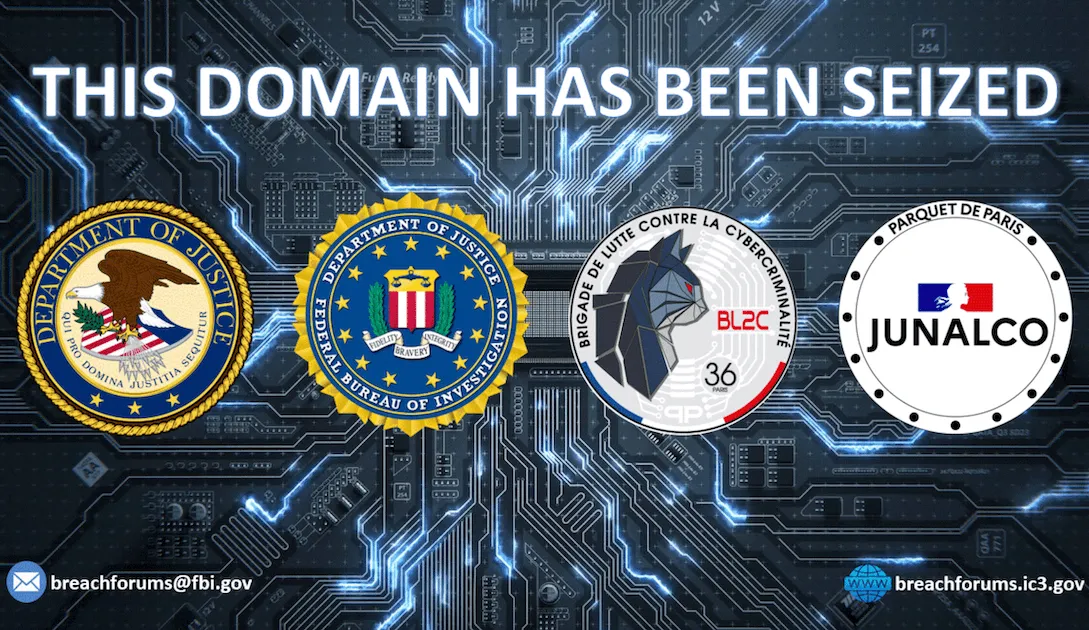Regional airline Envoy Air confirms Oracle E-Business Suite compromise



European law enforcement dismantled and seized an expansive cybercrime operation used to facilitate phishing attacks via mobile networks for fraud, including account intrusions, credential and financial data theft, Europol said Friday.
Investigators from Austria, Estonia and Latvia linked the cybercrime networks to more than 3,200 fraud cases, which also involved investment scams and fake emergencies for financial gain. Financial losses amounted to about $5.3 million in Austria and $490,000 in Latvia, authorities said.
The operation dubbed “SIMCARTEL” netted seven arrests and the seizure of 1,200 SIM box devices, which contained 40,000 active SIM cards that were used to conduct various cybercrimes over telecom networks. Officials described the infrastructure as highly sophisticated, adding that the online service it supported provided telephone numbers for criminal activities to people in more than 80 countries.
“It allowed perpetrators to set up fake accounts for social media and communications platforms, which were subsequently used in cybercrimes while obscuring the perpetrators’ true identity and location,” Europol said in a news release.
The law enforcement operation largely occurred Oct. 10 in Latvia, spanning 26 searches that also resulted in the seizure of hundreds of thousands of additional SIM cards, five servers and two websites. Officials also seized four luxury vehicles and froze a combined $833,000 in suspects’ bank and cryptocurrency accounts.
Europol said the full scale of the cybercrime network is still under investigation, but they’ve already traced the operation to more than 49 million accounts that were created and provided by the suspects.
The services provided by the cybercriminal organization were also allegedly used to commit extortion, migrant smuggling and various scams involving second-hand marketplaces, fake investments, shops and websites.
The coordinated takedown underscored the global prevalence of SIM farms, which allow cybercriminals to conduct and sell services for scams and various criminal activities via mobile network infrastructure. The Secret Service last month disrupted a network of electronic devices in the New York City area that included more than 300 servers and 100,000 SIM cards spread across multiple sites in the region.
Unit 221B on Thursday warned that SIM boxes and SIM farms are growing rapidly, placing any phone user, bank, network carrier or retailer at risk. Ben Coon, Unit 221B’s chief intelligence officer, has identified at least 200 SIM boxes operating across dozens of locations across the United States, the company said on LinkedIn.
Europol published a video of the Latvian police takedown: https://youtu.be/Z-ImysXws-0
The post Europol dismantles cybercrime network linked to $5.8M in financial losses appeared first on CyberScoop.
Read more of this story at Slashdot.
Matthew Lane pleaded guilty in May to extorting two companies after hacking into their networks and stealing information.
The post Four-Year Prison Sentence for PowerSchool Hacker appeared first on SecurityWeek.



A Massachusetts man who previously pleaded guilty to a cyberattack on PowerSchool, exposing data on tens of millions of students and teachers, was sentenced to four years in prison Tuesday — half the amount federal prosecutors sought in sentencing recommendations submitted to the court.
Matthew Lane, 20, stole data from PowerSchool belonging to nearly 70 million students and teachers, extorted the California-based company for a ransom, which it paid, causing the education software vendor more than $14 million in financial losses, according to prosecutors.
U.S. District Judge Margaret Guzman sentenced Lane to four years in prison, followed by three years of supervised release. Lane was also ordered to pay almost $14.1 million in restitution and a $25,000 fine for crimes involving the attack on PowerSchool and an undisclosed U.S. telecommunications company.
Federal prosecutors were seeking a sentence of eight years for Lane, arguing that the crimes he pleaded guilty to follow a series of cybercriminal activity dating back to 2021. “The government has serious concerns that Lane poses an ongoing threat to the community and remains in denial about the scope of his criminal activity,” prosecutors said in a sentencing memo filed Oct. 7 in the U.S. District Court for the District of Massachusetts.
Prosecutors cited multiple examples of other cybercriminals who committed and were convicted of less serious crimes. In those cases, the lighter sentences cybercriminals received did not sufficiently deter them from reengaging in cybercrime upon their release from jail. Lane’s attack on PowerSchool put 10 million teachers and 60 million children, some as young as five years old, at risk of identity theft for the remainder of their lives, prosecutors said.
The PowerSchool attack, which Lane committed in September 2024 by using a PowerSchool contractor’s credentials to gain unauthorized access, is reportedly the single largest breach of American schoolchildren’s data on record. Lane threatened to release the data in December 2024 if PowerSchool didn’t pay a ransom valued at nearly $2.9 million at the time.
Multiple school district customers of PowerSchool received follow-on extortion demands linked to the stolen same data, the company said in May. The downstream extortion attempts underscore how cybercriminals, affiliated or not, will continue to exploit sensitive data for financial gain.
Lane forfeited almost $161,000 traced to his crimes, but about $3 million in illicit proceeds remains unaccounted for, according to court documents. “The money he returned is barely one percent of the financial loss he caused,” prosecutors said in the court filing.
Lane is required to surrender to the Federal Bureau of Prisons by Dec. 1.
The post PowerSchool hacker sentenced to 4 years in prison appeared first on CyberScoop.
Federal cyber authorities issued an emergency directive Wednesday requiring federal agencies to identify and apply security updates to F5 devices after the cybersecurity vendor said a nation-state attacker had long-term, persistent access to its systems.
The order, which mandates federal civilian executive branch agencies take action by Oct. 22, marked the second emergency directive issued by the Cybersecurity and Infrastructure Security Agency in three weeks. CISA issued both of the emergency directives months after impacted vendors were first made aware of attacks on their internal systems or products.
F5 said it first learned of unauthorized access to its systems Aug. 9, resulting in data theft including segments of BIG-IP source code and details on vulnerabilities the company was addressing internally at the time. CISA declined to say when F5 first alerted the agency to the intrusion.
CISA officials said they’re not currently aware of any federal agencies that have been compromised, but similar to the emergency directive issued following an attack spree involving zero-day vulnerabilities affecting Cisco firewalls, they expect the response and mitigation efforts to provide a better understanding of the scope of any potential compromise in federal networks.
Many federal agencies and private organizations could be impacted. CISA said there are thousands of F5 product types in use across executive branch agencies.
These attacks on widely used vendors and their customers are part of a broader campaign targeting key elements of America’s technology supply chain, extending the potential downstream effect to federal agencies, critical infrastructure providers and government officials, Nick Andersen, executive assistant director for cybersecurity at CISA, said during a media briefing.
CISA declined to name the country or specific threat groups behind the attack on F5’s systems. Generally, the broader goal of nation-state attackers is to maintain persistent access within the targeted victim’s network to hold those systems hostage, launch a future attack, or gather sensitive information, Andersen said.
CISA’s order requires federal agencies to apply security patches F5 released in response to the attack, disconnect non-supported devices or services, and provide CISA a report including a detailed inventory of all instances of F5 products within scope of the directive.
Officials referred questions about the effectiveness of F5’s security patches back to the vendor and declined to independently verify if the software updates have fixed the vulnerabilities attackers gained information on during the breach.
Neither CISA nor F5 have explained how the attackers gained access to F5’s internal systems.
Officials repeatedly insisted that the government shutdown and multiple waves of reductions to CISA’s workforce did not negatively affect or delay the government’s ability to coordinate with partners, respond to this threat and issue the emergency directive. Andersen declined to say how many CISA employees have been dismissed with reduction-in-force orders since the federal government shut down two weeks ago.
“This is really part of getting CISA back on mission,” Andersen said.
“While, yes, this may be the third emergency directive that’s been issued since the beginning of the Trump administration, this is the core operational mission for CISA,” Andersen said. “That’s really what we should be doing, and we’re able to continue to perform that mission in collaboration with our asset partners right now.”
The post CISA warns of imminent risk posed by thousands of F5 products in federal agencies appeared first on CyberScoop.


Federal authorities seized 127,271 Bitcoin, valued at approximately $15 billion, from Chen Zhi, the alleged leader of a sprawling cybercrime network based in Cambodia, the Justice Department said Tuesday. Officials said it’s the largest financial seizure on record.
“Today’s action represents one of the most significant strikes ever against the global scourge of human trafficking and cyber-enabled financial fraud,” Attorney General Pamela Bondi said in a statement.
Officials said Chen, a 38-year-old United Kingdom and Cambodian national who has renounced his Chinese citizenship, built a business empire under the Prince Group umbrella headquartered in Phnom Penh, Cambodia, that constructs, operates and manages scam compounds that rely on human trafficking and modern-day slavery.
A criminal indictment against Chen was also unsealed in the U.S. District Court for the Eastern District of New York. He remains at large and the FBI is seeking information about his whereabouts. Chen faces up to 40 years in prison for his alleged crimes.
Chen is accused of founding and running Prince Group since 2015, resulting in a global expansion that has brought the cybercrime network’s operations to dozens of entities spanning more than 30 countries.
Officials said Chen was directly involved in managing the scam compounds and committed violence against people in the forced labor camps where schemes targeted victims around the world, including in the United States. One network based in Brooklyn, New York, scammed more than 250 people in New York and across the country out of millions of dollars, according to the indictment.
Authorities in the U.S. and U.K also imposed coordinated sanctions against the Prince Group’s cybercrime networks in Southeast Asia accused of long-running investment scams and money laundering operations.
Officials said the sanctions against people and organizations involved with the Prince Group transnational criminal organization and its severing of Huione Group from the U.S. financial system mark the most extensive action taken against cybercrime operations in the region to date.
“The rapid rise of transnational fraud has cost American citizens billions of dollars, with life savings wiped out in minutes,” Treasury Secretary Scott Bessent said in a statement.
The agency’s Office of Foreign Assets Control imposed sanctions on 146 people and organizations participating in Prince Group TCO, while the Financial Crimes Enforcement Network issued a rule under the USA PATRIOT Act to sever Cambodia-based financial services conglomerate Huione Group from the U.S. financial system.
OFAC also sanctioned a network of 117 illegitimate businesses affiliated with Prince Group. The agency published a complete list of people and entities sanctioned as part of the sweeping action.
Authorities said Prince Group is prolific and remains a dominant player in Cambodia’s scam economy, responsible for billions of dollars in illicit financial transactions. U.S. government officials estimate Americans lost more than $10 billion to Southeast Asia-based scam operations last year, noting that U.S. online investment scams surpass $16.6 billion.
Huione Group has allegedly laundered proceeds from cyberattacks initiated by North Korea and transnational criminal organizations in Southeast Asia responsible for virtual currency investment scams, authorities said. The organization laundered more than $4 billion in illicit proceeds between August 2021 and January 2025, the Treasury Department said.
The U.K.’s Foreign, Commonwealth, and Development Office also participated in the crackdown by imposing sanctions on Prince Holding Group, its alleged leader Chen and key associates.
“Today, the FBI and partners executed one of the largest financial fraud takedowns in history,” FBI Director Kash Patel said in a statement.
The post Officials crack down on Southeast Asia cybercrime networks, seize $15B appeared first on CyberScoop.
Fortra, in its most forceful admission yet, confirmed a maximum-severity defect it disclosed in GoAnywhere MFT has been actively exploited in attacks, yet researchers are still pressing the vendor to be more forthcoming about how attackers obtained a private key required to achieve exploitation.
The vendor published a summary of its investigation into CVE-2025-10035 Thursday, three weeks after it publicly addressed the vulnerability in its file-transfer service for the first time. “At this time, we have a limited number of reports of unauthorized activity related to CVE-2025-10035,” the company said.
“It is positive to see Fortra increase their transparency surrounding the CVE-2025-10035 saga,” Ben Harris, founder and CEO at watchTowr, told CyberScoop. “However, the mystery remains — watchTowr researchers and others are still unclear how this vulnerability could be exploited without access to a private key that only Fortra is believed to have access to.”
Researchers at watchTowr, Rapid7 and VulnCheck last month rang alarm bells about the private key after they independently confirmed the steps attackers would have to take to achieve exploitation.
“The fact that Fortra has now opted to confirm ‘unauthorized activity related to CVE-2025-10035,’ confirms yet again that the vulnerability was not theoretical, and that the attacker has somehow circumvented, or satisfied, the cryptographic requirements needed to exploit this vulnerability,” Harris said.
The scope of compromise has continued to grow during the past month as Fortra and researchers continue hunting for evidence of active exploitation. Fortra also shared more details about the timeline and actions it took behind the scenes prior to publicly disclosing and addressing the vulnerability.
Security staff at Fortra began investigating a potential vulnerability after a customer reported suspicious activity Sept. 11. After inspecting customer logs, the company started notifying potentially impacted customers and reported the malicious activity to law enforcement that same day.
The vendor also said it found three instances in its cloud-based GoAnywhere MFT environment “with potentially suspicious activity related to the vulnerability.” Fortra said it isolated those instances for further investigation and alerted customers using those managed services of potential exposure.
The company deployed the patch to cloud-based services it hosts for customers Sept. 17, but it has not described the extent to which the vulnerability has been exploited in on-premises customer environments and Fortra-hosted services. The vendor said it updated all company-hosted instances of GoAnywhere MFT, including infrastructure rebuilds.
Fortra did not answer questions submitted by CyberScoop on Monday.
The Cybersecurity and Infrastructure Security Agency added CVE-2025-10035 to its known exploited vulnerabilities catalog Sept. 29, noting the defect has been used in ransomware campaigns. Microsoft Threat Intelligence followed up on that last week, noting that a cybercriminal group it tracks as Storm-1175 has exploited CVE-2025-10035 to initiate multi-stage attacks including ransomware.
Fortra repeatedly declined to confirm it was aware of active exploitation in the wake of those reports. The company previously added indicators of compromise to its security advisory, but didn’t say it was aware of reports of unauthorized activity related to the defect until Thursday.
The post Fortra cops to exploitation of GoAnywhere file-transfer service defect appeared first on CyberScoop.
Read more of this story at Slashdot.
Google researchers believe exploitation may have started as early as July 10 and the campaign hit dozens of organizations.
The post Sophisticated Malware Deployed in Oracle EBS Zero-Day Attacks appeared first on SecurityWeek.



